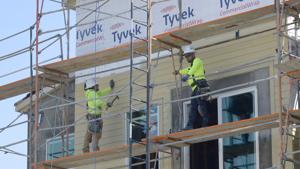The Metropolitan Transportation Commission (MTC) and the Association of Bay Area Governments (ABAG) have unveiled the ambitious Plan Bay Area 2050+ Final Blueprint, a comprehensive strategy poised to redefine the region’s future. This transformative initiative projects accommodation for a staggering 900,000 new households and over 1.3 million new jobs by the year 2050, marking a significant step towards addressing the evolving needs of the Bay Area.
This extensive regional growth strategy, developed by MTC and ABAG, outlines a vision for the next quarter-century, aiming to foster a more affordable, connected, diverse, healthy, and vibrant Bay Area. The blueprint demonstrates a meticulous approach to development, considering various facets of urban living and economic expansion.
The Final Blueprint is the culmination of two years of intensive planning and broad public engagement, incorporating vital feedback from diverse communities. Outreach efforts included over 40 pop-up workshops in Equity Priority Communities, three region-wide surveys, and partnerships with 22 community-based organizations, ensuring a comprehensive and inclusive planning process.
A cornerstone of the plan is its focus on transportation infrastructure and mobility. By 2050, investments in expanded transit services and active transportation infrastructure are expected to more than double the share of commuters using public transit, biking, or walking, significantly reducing reliance on personal vehicles.
The blueprint also addresses critical housing development and affordability challenges. Strategies for affordable housing production, preservation, and renter protections are projected to reduce housing cost burdens for low-income households by 42%, with overall reductions of approximately 12% across all income levels.
Furthermore, the plan emphasizes environmental impact and resilience, aiming to protect 95% of Bay Area homes vulnerable to sea-level rise. Retrofit strategies are expected to mitigate risks from earthquakes and wildfires by 25% to 50%, alongside efforts to increase access to open spaces for residents.
MTC and ABAG have initiated a formal environmental impact analysis, a crucial phase for the Plan Bay Area 2050+ Final Blueprint. This review will assess the primary blueprint alongside a “no project” alternative and two additional alternatives designed to minimize potential environmental consequences.
Meeting stringent urban sustainability targets, the plan is expected to achieve a 19% per capita reduction in greenhouse gas emissions from light-duty vehicles by 2035, compared to 2005 levels. This goal is supported by integrated strategies such as investments in electric vehicles, roadway pricing, and strategic land use policy changes.
The agencies anticipate making necessary revisions to the plan before seeking final approval for the Plan Bay Area 2050+ and its Final Environmental Impact Report and Implementation Plan in early 2026, marking the definitive step towards realizing this ambitious regional vision.






Leave a Reply